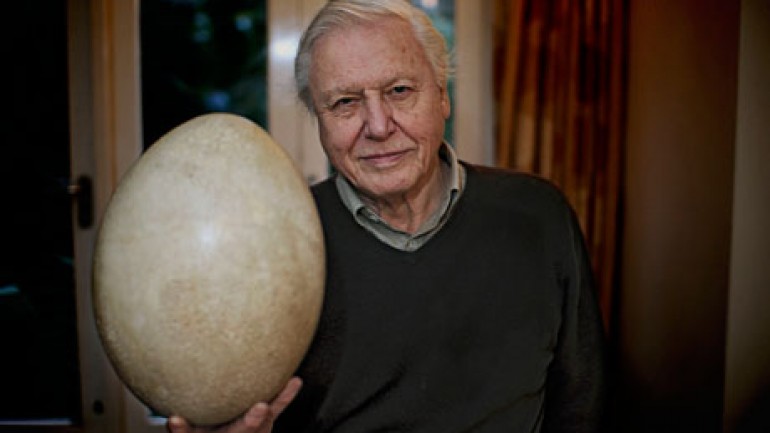Episode 1:
Island of Marvels
Madagascar, the world’s oldest island, broke off from Africa and India and has been on its own for more than 70 million years. In splendid isolation, it has evolved its very own wildlife – more than 80 per cent of it is found nowhere else. And that wildlife is quite extraordinary. In this episode, we reveal the island’s most bizarre and dramatic places, and the unique wildlife that has made its home in each, thanks to the geology and isolation of this Alice-in-Wonderland world.
The stars are the lemurs, Madagascar’s own primates. A family of indris leaps like gymnasts among rainforest trees; and crowned lemurs scamper around Madagascar’s weirdest landscape, the razor-sharp limestone tsingy, which looks like something from another planet. And sifakas, ghostly white lemurs, move like ballerinas across the forest floor.
Madagascar’s wildlife is famously strange. Bright red giraffe-necked weevils use their necks to build leaf nests with the complexity of origami. Chameleons stalk the forests, none more intriguing than the pygmy chameleon, the world’s smallest reptile, delicately courting a female in its giant world. The fearsome fossa, Madagascar’s only big mammal predator, looks for a mate – 15 metres up a tree. And in the southern ‘spiny desert’, a spider hauls an empty snail shell, 30 times its own weight, up into a bush as a shelter; something never before filmed, and possibly never observed in the wild before.
At the end of the episode, we go ‘behind the camera’, to reveal the challenges of capturing the behaviour of the little-known wildlife of this island. How do you go about filming a rare, secretive lemur that lives in the middle of Madagascar’s biggest lake?
Episode 2:
The Lost Worlds
David Attenborough tells the story of one of the most intriguing wild places on earth: Madagascar, a huge island of dramatic landscapes, where the wildlife is strange and unique; some of it has been filmed for the very first time.
In this episode, we travel deep into Madagascar’s most luxuriant landscape; the rainforests that cloak the island’s eastern mountains. Remote and mysterious, this little-known region of towering peaks and precipitous escarpments is home to over half of all Madagascar’s unique species.
Narrated by David Attenborough, this second episode showcases an amazing collection of wildlife, many of which have never before been filmed. Cyanide-eating lemurs, cannibalistic frogs, meat-eating plants, cryptic leaf-tailed geckos, tadpole-eating wasps, tunnel-digging chameleons and house-proud flycatchers are just some of the weird and wonderful wildlife featured in this programme.
Along this coast, every cliff and valley is like a lost world where nature has run riot.
Amongst the boulders fields of the Andringitra Highlands, a few hardy troops of ringtailed lemurs make their home. More at home in the hot southern forests, these eke out a living at the top of the coldest mountain on the island. To fight the sub-zero cold they have developed thick coats and can only survive the freezing nights by huddling together in rocky crevices. In this high ‘desert’, they must eat cacti for moisture.
But descend just a few hundred metres and it’s a very different world, where dense forests are permanently shrouded in clouds. The Marojejy Massif is the last sanctuary of one of Madagascar’s rarest lemurs, the elusive, ghostly white silky sifaka. There are thought to be only two hundred of these playful and endearing creatures left on Earth.




links broken
You are very stupid
This man has got to be the best ever in the field that he works
David Attenborough is an incredible living fossil, showing us all the many wonders that this world holds. His documentaries are so varied and fascinating as well as enlightening and makes watching his videos a very rewarding experience. Life should be a continually learning experience about this ever-changing world that we live in and the many ways that the many living things here have adapted to these changes in order to survive here. Adaptation to change seems to be the secret to survival in this world and many cultures in our society seem to have great difficulty with this.Their societies are plagued with war and poverty which seem to stem from their antiquated religeous beliefs. It’s time that we all looked towards the future with the new tools brought on by our rapidly advancing technologies and learn to adapt to these changes. David Attenborough shows us how life has changed in order to cope with these changes and reveals the importance of being aware and learning from our past. We should never forget how we got to where we are…
attenborough is not a fossil.
Attenborough wants to reduce the population of the world, and passes it off as “science”. The guy’s a genocidal maniac. I can’t wait until he is a fossil.
weird as i would like to do the same thing
He doesn’t want to reduce the population of the world by killing people who are already here, dope. Instead he’s got a very reasonable opinion: fewer people should be born. How in the world can he advocate for the genocide of people who doesn’t exist?
epic, stunning, another great doco by the Man! soo inspirational I wrote a song about it!
http://www.youtube.com/watch?v=rRxxe0tO61c&feature=channel_video_title
part 2 in full.
http://www.youtube.com/watch?v=cpCWS0aN_vY
Says the video is private…
This is an amazing documentary. I absolutely love the way they discuss many animals some that you very rarely see on the main stream madagascar films great